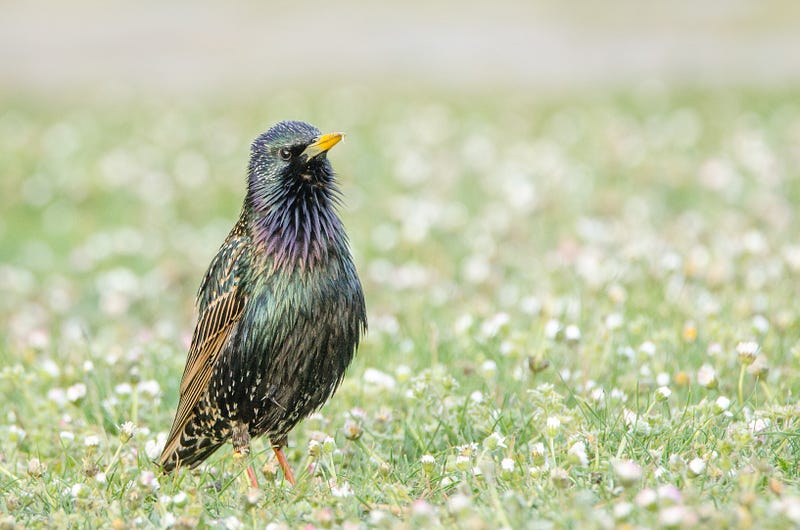The Rapid Evolution of European Starlings: An Ecological Study
Written on
Chapter 1: Introduction to the European Starling's Invasion
The European starling (Sturnus vulgaris) is an intriguing species, particularly in light of its introduction to North America. Contrary to what their name suggests, these birds are not originally from the continent. A small number were brought over in 1890 and 1891 by Eugene Schieffelin, a wealthy New York drug manufacturer, who released them into Central Park, unknowingly initiating a significant ecological shift. From a mere 100 birds, their population skyrocketed to an estimated 200 million by 1970.

Chapter 2: The Expansion of the Starling Population
What enabled these birds to thrive across diverse habitats in North America? How did they evolve from such a small founding population to dominate the continent in a relatively short time? These questions have sparked interest among scientists and birdwatchers alike.
To address these inquiries, a research team led by Natalie Hofmeister, a PhD candidate at the Cornell Lab of Ornithology, investigated the starlings' genomes to understand their adaptability.
Section 2.1: Genetic Analysis of Starlings
In early 2016 and again in 2017, researchers from the U.S. Department of Agriculture collected 166 male European starlings from various locations across the United States. They extracted DNA from muscle samples to identify any population structure among the birds.

Hofmeister's team found minimal genetic variation in the starlings' DNA but discovered specific genomic signatures linked to their adaptation to local climates. These adaptations likely arose in response to new environmental challenges, such as varying temperatures and precipitation levels that the birds had not faced in their native Europe.
Section 2.2: The Speed of Evolutionary Change
"The remarkable evolutionary changes in starling populations since their introduction to North America occurred in just 130 years, coinciding with a dramatic increase in their range and numbers," Hofmeister noted. This raises critical questions about the source of these adaptations. Were the genetic variants present in the original population, dormant until conditions changed?
"Variations that may not have been advantageous in one habitat can become crucial in another," Hofmeister explained, highlighting how traits beneficial for survival could become more prevalent in the new environment.
Chapter 3: Comparisons with Other Studies
Interestingly, a previous study on the mitochondrial DNA of starlings from North America, Australia, and South Africa revealed that while the North American and Australian populations likely originated from the same region in the UK, Australian starlings have not adapted as effectively to arid conditions.
This discrepancy invites further exploration into the factors influencing adaptation. One potential explanation is that unlike genetic mutations, epigenetic shifts—rapid changes in gene expression—may facilitate quicker adaptations without altering the DNA sequence.
Chapter 4: The Role of Epigenetics
Hofmeister remarked, "North American starlings appear to have specialized in response to their new environments." Other invasive species, such as the house sparrow, share similarities with starlings, suggesting that epigenetics could drive their adaptability in various settings.
Despite these capabilities, European starlings have seen a 63% decline in urban areas across North America and are also decreasing in Europe. This situation raises pressing concerns: Have human impacts like climate change and habitat destruction overwhelmed even the rapid adaptability of species like the starling?
In summary, as we consider the ecological ramifications of our actions, one must ponder whether we have pushed the global system beyond the adaptive limits of even the most resilient species.
Source:
Natalie R. Hofmeister, Scott J. Werner, and Irby J. Lovette (2021). Environmental correlates of genetic variation in the invasive European starling in North America, Molecular Ecology, published online on 19 January 2021 ahead of print | doi:10.1111/mec.15806
Originally published at Forbes.com on 19 February 2021.